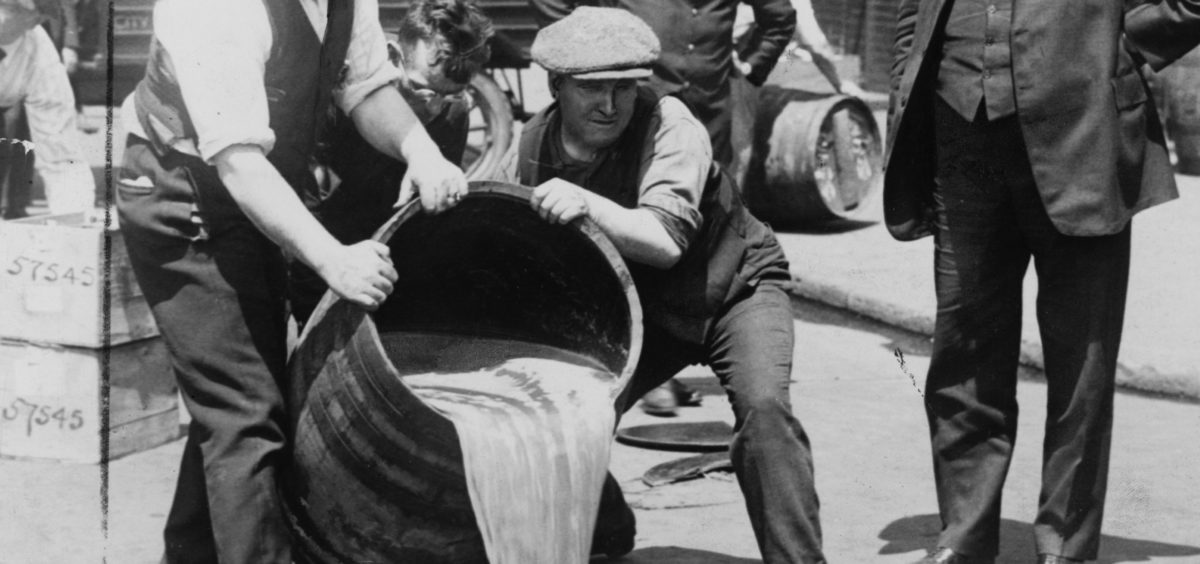The economic dimension of prejudice
SUGGESTED

Christopher Snowdon writes for CapX


In Texas, a Burmese American and his two children went to a shop and were attacked and injured by a man with a knife. The FBI said the 19-year-old suspect may have been motivated to kill the family because they looked Chinese. In Brooklyn, a 26-year-old woman was verbally assaulted by a man at a train station, who yelled “Go back to China” and “You are dirty, get your temperature checked” at her, before attempting to punch her and steal her mobile phone.
In every crisis, people look for scapegoats. In the United States, ever since the outset of the coronavirus crisis, there have been increasingly frequent reports of assaults and abuse against Asians and Asian Americans. But prejudices against Asians did not suddenly emerge with the Covid-19 pandemic.
Approximately 6% of the total American population are Asian Americans, far fewer than the 18.3% who are Latinos and the 13.4% who are black. Of all ethnic groups in the United States, Asian Americans have the highest life expectancy, the highest average household income, and the lowest crime rate.
The median household income for Asian Americans is $74,829, which is 39% higher than the national median of $53,657. Indian Americans have a higher household income than any other Asian American subgroup, with a median of $101,591. After Indian Americans come Filipino, Japanese and Chinese Americans with high median incomes of $82,839, $70,261, and $69,586, respectively.
Discrimination against Asian Americans
Asian immigrants to the United States are among the most successful high school and college graduates: 49% hold bachelor’s degrees, compared to 28% of the overall population. They also account for one third of the participants in national math and physics competitions. While “affirmative action” programmes give Black Americans preferential access to higher education, Asian Americans are massively disadvantaged. In fact, they are discriminated against because they have to achieve significantly better results in admission tests for top universities than white applicants.
Minorities that are regarded as particularly economically and academically successful have frequently been discriminated against and persecuted throughout history — above all, Jewish people.
The Stereotype Content Model
According to the Model of (Often Mixed) Stereotype Content developed by the psychologist Susan T. Fiske and colleagues, affective and emotional reactions to social outgroups are primarily shaped by two dimensions:
- The first dimension is warmth: an outgroup can be stereotyped as warm and friendly or as cold, untrustworthy, and unfriendly.
- The second dimension is competence: an outgroup can be stereotyped as confident, hardworking, and ambitious or as lazy and incompetent.
There are four possible combinations (stereotypes) for how outgroups can be perceived:
- Warm and competent
- Warm and incompetent
- Cold and competent
- Cold and incompetent
Empirical studies have confirmed that these stereotypes are associated with specific social and cultural groups. In a series of studies, for example, individuals were asked to score social out-groups on a scale of 1 to 5 for the dimensions of warmth and competence.
- The highest ratings for warmth and competence went to the in-group—the studies’ participants were predominantly white and middle class.
- Jews, Asians and rich people were given very high scores for competence but very low scores for warmth.
The same researchers also examined which emotions were triggered by the stereotypes of these groups. High-competence and low-warmth groups, including rich people, Jews, and Asians, were met with mixed feelings of admiration and envy.
Stereotypes of Asians
Researchers have also applied the Stereotype Content Model in numerous experiments examining stereotypes and prejudices against Asian Americans. Asian Americans are predominantly perceived by other Americans as being highly competent, but not very sociable. In a study conducted by Monica H. Lin and colleagues, the 1,296 participants most strongly associated the following traits with Asian Americans:
- Constantly in pursuit of more power
- Obsessed with competition
- Think they are smarter than everyone else
- Striving to become number one
- Motivated to obtain too much power in society
- Compare own achievements to other people’s
- To get ahead of others, can be overly competitive
- Enjoy disproportionate economic success
Asian Americans were also described as committing less time to socialising and as being less sociable in general than other groups. The study concludes, “Asians are thus the targets of resentful, envious prejudice: grudgingly respected for their presumed competence but disliked for their alleged lack of sociability.”
Prejudices against groups such as Asian Americans (as well as against the rich) are thus different from prejudices against other minorities, such as black people. Asian Americans, Jews and the rich are among those outgroups that inspire a mixed emotional reaction of “admiration, resentment, and envy.” In order to justify the rejection of such groups — whose abilities are not denied — people base their negative sentiment on alleged “social deficiencies” (i.e. that members of the out-group are less sociable, etc.): “To justify discriminating against a high achieving outgroup, stereotyping them as socially inadequate provides a ready excuse.”
Prejudices against minority groups are usually mobilised during periods of social upheaval. This has been the case throughout the entirety of human history. In Europe in the Middle Ages, the scapegoats for the Black Death were mainly “witches” and members of the Jewish faith.
Today, with the world in the grip of the coronavirus, pre-existing prejudices and stereotypes against Asians are being mobilised. But the bigger story is an economic one. The true underlying reason for widespread anti-Asian American sentiment is social envy, inspired by the fact that Asian Americans are more successful both economically and academically.
Dr Rainer Zitelmann is a historian and sociologist. He is the author of the book The Rich in Public Opinion.
1 thought on “The economic dimension of prejudice”
Comments are closed.




this article is as stupidly self-serving as the rest of your politics.
In fact, you pack of bastards-in-a-clown-car lot sum this up to a tee:
Eugenics flew 100 years ago because there was a weak understanding of biology, along with endemic racism, and plain human othering (mostly evident in religions and the religious). Today, due in part to efforts by the likes of your organisation, education is barely better than 1922, and so poor biology means anti-vaxx can have another generation of fun.
What we have too is wide-spread lack of understanding of economics, and economics is still the dismal science. It is perhaps the softest of soft sciences. Eugenics rose up after a very solid biological theory came to the fore, because idiots did not understand the phrase “survival of the fittest”. Self-servingly they assume it means the more violent the predator, the better, whereas those that can read know Darwin was referring to suitable adaptation for a niche.
Combined with prejudice and othering, bogus economic frameworks are put forward that are clearly self-serving. As eugenics was (and still is).
“Free markets” are to economics what eugenics is to biology. Either you lot know it and don’t care, or you are so thick you can’t see what is in front of your face.
What demonstrates the idea is that while eugenicists have no problem with labels to tier humanity, the contemporaneously moneyed do not either: and the label is “consumer”. A consumer only has economic worth, in a way that parallels how a sexist sees a woman.
Thing is, you lot really want a society as stratified as any theocracy, dictatorship, monarchy, necrocracy (DPRK), and the claims of liberty of freedom are utterly subjective. You might be scared of the economy not being society’s priority, or democratic values being applied to the economy, but in reality the biggest threat to your power is someone who is even more of a bastard.
Either double-down and try to be the bigger bastard, or shut your fucking faces, you right-wing fuck wits